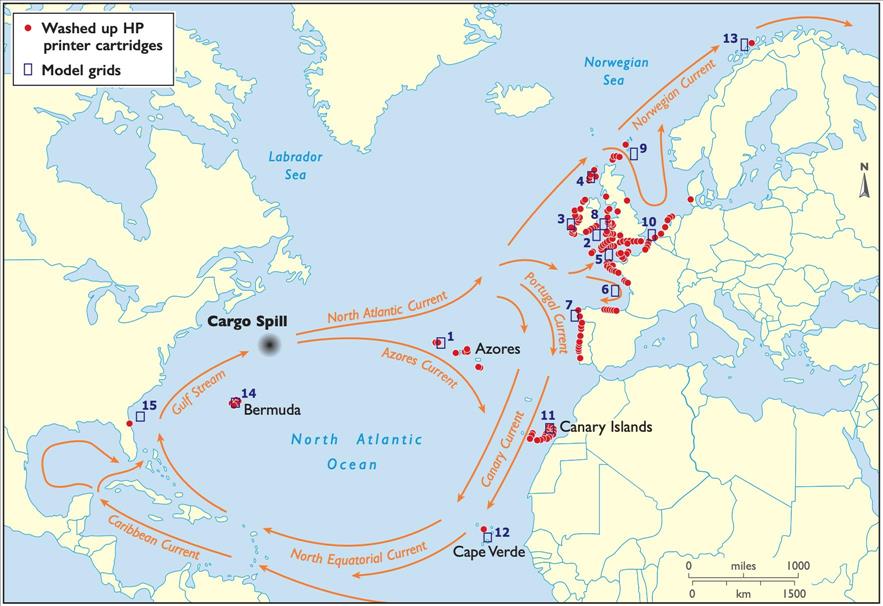(MENAFN- The Conversation) The in March by a megaship named Ever Given delayed laden with thousands of containers, serving as a reminder of the scale of the shipping industry and the global repercussions when something goes badly wrong at sea. Yet most people remain unaware of just how frequently the cargo carried by huge container ships doesn''t make it to port at all.
are believed to be lost overboard each year – the result of bad weather, poor stowage, inadequate supervision and even the itself. The steel containers plunge quickly towards the seabed, with many rupturing under pressure or from the impact when they hit the ocean floor.
If the material in the container is significantly denser than seawater, its dispersion will be localised and confined to the sea floor. But articles with a density close to or lower than seawater, including many common plastics, disperse to the ocean surface, where they''re often carried thousands of miles onto far-flung beaches. In a , my colleagues and I found evidence such plastics can survive in the ocean for up to 1,300 years.
tracked a spill of Hewlett-Packard inkjet cartridges, which is believed to have taken place 1,500km east of New York in 2014. Using social media to connect with beachcombers, we found the cartridges had spread as far south as Cape Verde and as far north as the Arctic Circle.

Thousands of inkjet cartridges have been plucked from the shore by beachcombers since the 2014 spill. Tracey Williams, Author provided (No reuse) Spills at sea
Most container losses go unreported and undocumented because, at present, there's no obligation for lost cargo to be declared unless it's of a hazardous nature and likely to pose an immediate threat to the environment. This means that evidence of cargo from lost containers is usually restricted to groups of distinctive plastic items, noticed primarily by regular beachcombers.
In 1997, for example, over sixty containers were lost from the Tokio Express after a giant wave tilted the vessel 60 degrees to the side as it was rounding Land's End in south-west England. One of the containers was filled with nearly 5 million pieces of , which have been beaching along the coastline of Cornwall ever since.
Depending on the location of a spill, cargo that floats on the sea's surface – which the UN estimates to comprise – provides an opportunity for scientists to study ocean circulation.
This was the case in 1992 when a container of childrens'' bath toys, including a consignment of rubber ducks, was lost in the centre of the North Pacific. They were subsequently reported by beachcombers over a range of , allowing scientists to learn about the circulation of the surface waters of the North Pacific Ocean.
Then, in 2014, small but distinctive Hewlett-Packard inkjet cartridges began to appear on the beaches of the Azores islands in the centre of the North Atlantic. My colleague, Tracey Williams, posted calls for further sightings on an international beachcombing group on social media, with over 50,000 members.
Reports soon came flooding in. Sightings were shared along the coasts of western Europe, the Canary Islands, Cape Verde, Bermuda and Florida. Some cartridges were found on the shores of the North Sea and the beaches of northern Norway.
This extensive dataset on locations and timings revealed how buoyant plastic was transported across the North Atlantic Ocean by different currents, with cartridges spreading nearly 8,000km in less than four years at an average drift speed of 10cm a second.

Our study showed how a single spill of plastics can disperse across continents on ocean currents. Andrew Turner, Author provided (No reuse) We then used , an oceanographic model, to simulate cartridge transport from the spill site. The model's outputs were very similar to observations made by our beachcombing ''citizen scientists'', but key discrepancies highlighted where the model could be improved and how beaching could be incorporated into oceanographic transport simulations.
Ocean microplastics
After gathering our data, we extended our study to examine the biofouling and weathering of the cartridge plastic. Over their relatively short exposure to the sea, the cartridges'' polypropylene shell already exhibited considerable deterioration – a source of we know are .
Read more:
Electronic tags remaining on some cartridges also contained potentially hazardous chemicals, including brominated flame retardants and copper. The presence of these tags classify the spill as , and as such the cartridges should be regulated under more stringent electronic waste regulations.
Currents tend to ferry and concentrate plastics into ''garbage patches'' in certain areas of the sea. Regarding spills more generally, the International Maritime Organization has recently established an for 2025 that will consider a compulsory means of declaring plastic litter derived from containers lost at sea. Such regulations will incentivise better stowage and provide scientists with a greater insight into the problem of ocean pollution from spillages.
MENAFN11052021000199003603ID1102067444
Legal Disclaimer:
MENAFN provides the information “as is” without warranty of any kind. We do not accept any responsibility or liability for the accuracy, content, images, videos, licenses, completeness, legality, or reliability of the information contained in this article. If you have any complaints or copyright issues related to this article, kindly contact the provider above.